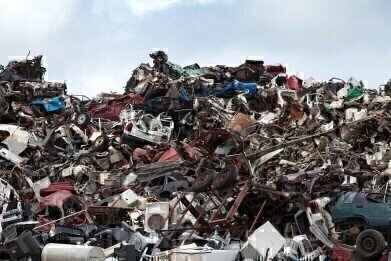Waste Management
What Are the Pros and Cons of Landfill?
Jul 14 2021
Colloquially known as dumps or tips, landfill sites are the most common way of disposing of non-recyclable waste. But while they’re convenient and affordable, they also entail a whole host of environmental drawbacks – so are they really a sustainable solution to our waste disposal problem? Here’s a rundown of the pros and cons of landfill sites to help you decide.
The case for landfills
It’s no coincidence that landfills are employed all over the globe. Here are a few of the reasons why they have been and continue to be hugely popular as methods of waste disposal:
- Convenience. Building and using a landfill does not require complicated technology, expert knowhow or even much in the way of a financial outlay. As such, they’re a convenient and fairly cheap means of disposing of non-recyclable waste.
- Cleanliness. By diverting all non-recyclable to a specific site, authorities can ensure that towns, villages and cities remain clean. Not only does this avoid the visual unpleasantness of fly tipping, but it also keeps the surrounding environment safe, too.
- Energy production. With more and more importance being attributed to the concept of a circular economy, researchers have been determining the value of waste materials as fuel feedstock. These forms of biofuel can serve as sustainable alternatives to oil, coal and gas.
- Employment. The collection and transportation of waste, alongside the management of landfill sites, creates plentiful job opportunities among the local community. This helps to promote economic growth and stabilise populations.
- Fewer emissions compared to incineration. The main rival to landfills is simply incineration of waste materials. While this may be a more space-efficient option, it’s certainly not better for the environment in terms of the greenhouse gas emissions it produces.
The case against landfills
While there are certainly arguments to be made for the existence of landfills, there are a number of undesirable impacts upon the environment. These include:
- Soil, groundwater and air pollution. As a breeding ground for bacteria and other contaminants, landfills can allow pollution to contaminate the land, sea and air. Air quality sensing of particulate matter shows that levels of this damaging pollutant are high around such sites.
- Deforestation. In certain parts of the world – especially among developing nations – forested areas are cleared to make way for landfill sites. This not only deprives the Earth of a primary source of carbon absorption, but also destroy natural habitats for many florae and faunae.
- Cosmetic impacts. The sight and smell of a landfill are unpleasant on the eye and nose, leading to discomfort for residents living in its vicinity. If located in a tourism area, it can harm the economic performance of a region by discouraging visitors.
- Hazardous waste. Often, hazardous chemicals, toxins and other substances are not disposed of responsibly, instead ending up in landfill sites. Here, they can contaminate the soil, groundwater and air (as mentioned above) and endanger the lives of plants, animals and humans.
- Ecological imbalance. The proliferation of bacteria at landfill sites can disrupt the delicate harmony of surrounding ecosystems, promoting the growth of certain species to the detriment of others. This can potentially cause endangerment or even extinction of local populations.
Events
IWA World Water Congress & Exhibition
Aug 11 2024 Toronto, Canada
Aug 25 2024 Stockholm, Sweden and online
Sep 03 2024 Mexico City, Mexico
Sep 03 2024 Mexico City, Mexico
Sep 03 2024 San Diego, CA, USA













